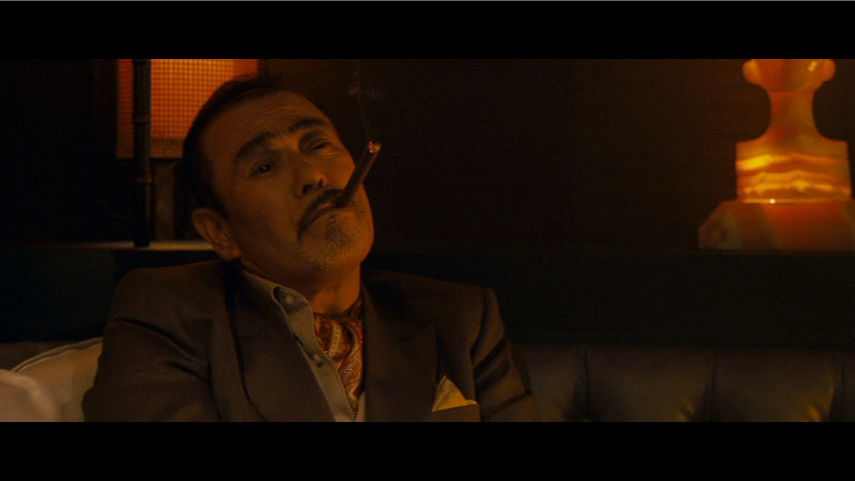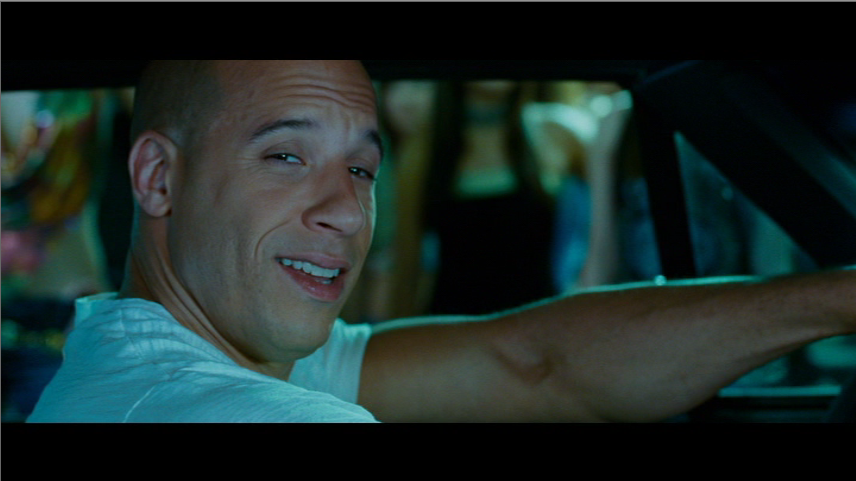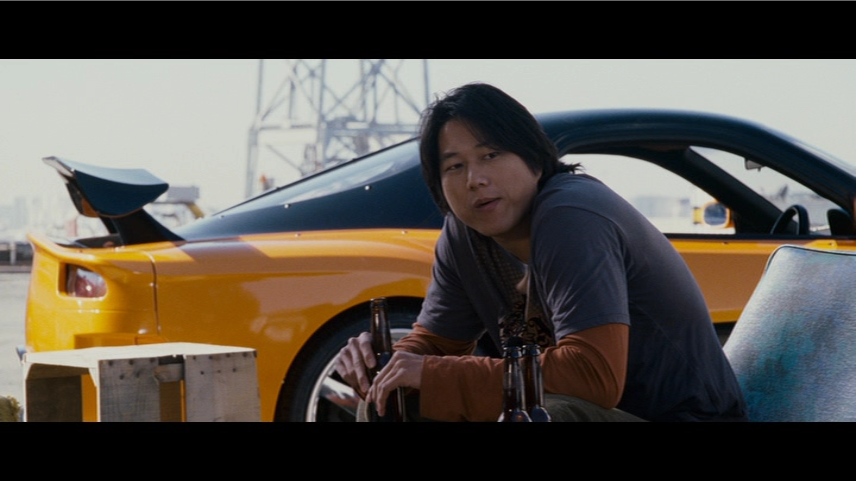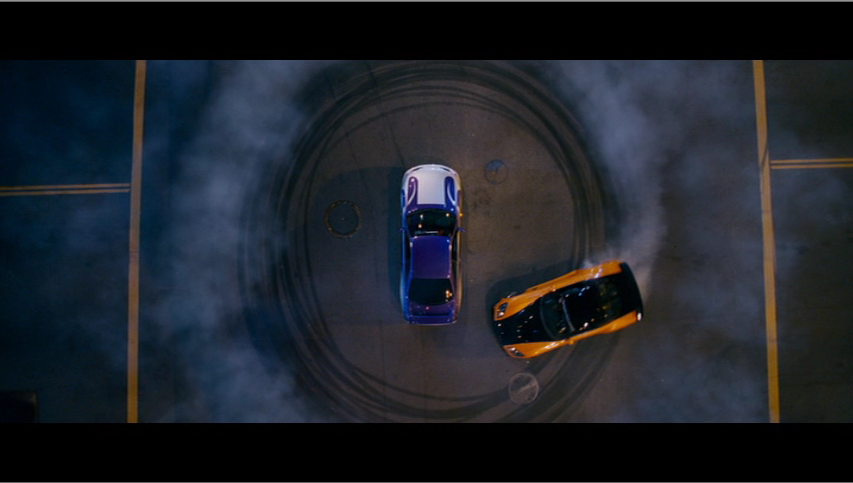isn’t th
ean
A dramatic journey through the dreck we all know and love.
Written By Zak Attack
Why Did I Watch This?
The Fast and the Furious: Tokyo Drift telegraphs its laughable premise within the first 20 seconds of the trailer. In addition to focusing on just the “drifting” aspect of racing, they took a page out of the Bad News Bears, James Bond, Big Bird, and the Toxic Avenger… and took the floundering franchise across the Pacific for a fish-out-of-water tale. Despite all that, it sure looks like a Fast and the Furious film, just with more Japanese actors.
As we prepare for the Academy Award hopes of Furious 7, there seems to have been some critical re-evaluation of the oft-maligned Tokyo Drift. Despite looking the least essential at first glance, it does tie-in to the later films… even more so than the Paul Walker/Tyrese entry in 2 Fast 2 Furious. And while it’s the lowest grossing of the six, it’s also the first one of these directed by franchise reinvigorator Justin Lin.
How Did I Watch It?
I had only seen the first movie in the series in the theatre and avoided the others like a plague since I really didn’t like it. (An even worse version of Point Break where they only drive in straight lines? No thanks.) However, with all the praise for the wild action of Fast 5 and Fast & Furious 6, I decided to pound through all the movies over the span of a few weeks in anticipation of Furious 7. So I popped this up to the top of my queue from #991. While I didn’t imbibe during the film, I had been out late that night and was still nice and toasty. Netflix predicted I’d give it 2.4 stars.
What Did I Watch?
Taking a page out of Halloween III: Season of the Witch‘s book, The Fast and the Furious: Tokyo Drift departs from its predecessors with a new cast, a new premise, and a subtitle that references a 1966 classic.
Lucas Black is Sean Boswell, a troubled teen who likes fast cars so much that he races compulsively. Instead of arresting him when he gets in trouble, the cops in each location just make him move to a new state until finally his mom gets sick of moving and forces him to move to Japan to live with his father. Which, somehow, doesn’t curb his racing habit. It’s never really addressed, but he seriously has an Intervention-level problem. He was issued a speeding ticket the first day he got a license and is even told he’ll be cut-off from his family if he races again.
His first night in Japan, Sean tries to race a local gangster named D.K. (it stands for the “drift king”, and don’t worry… the movie makes the Donkey Kong joke for you), but busts up another low-level criminal’s car in the process. The owner of the destroyed car (Han, played by Sung Kang) forces him to work as an enforcer to pay it off, and they become fast friends. Sean also makes nice with two high school classmates in schemer Twinkie (Bow Wow) and D.K.’s girlfriend Neela (Nathalie Kelley).
D.K. doesn’t appreciate the time Neela’s been spending with the new kid in town, and also learns from his Yakuza uncle (played by Sonny Chiba!) that Han’s been skimming off the top. This confluence of disrespect gets him pretty angry, so D.K. shows up to Han’s garage packing heat. In the resulting chase, Han gets killed which mobilizes Sean to stay in Tokyo and fix things instead of running away to a new city like he usually does.
His first step in making right by his dead friend involves Sean boldly enters Sonny Chiba’s club and gives the Yakuza boss the money that Han stole. He then apologizes for the mess that the rivalry with D.K. has caused and proposes to settle things with a final race where the loser leaves town. Fortunately for him, Sonny Chiba is totally cool with making business decisions by having high school kids street race with each other.
After a montage where everyone bands together to fix up a new car for Sean, the race is on. But that isn’t the first montage. In fact, there are a whole lot of montages before this. There are montages of Tokyo car culture, montages of organized crime, a montage where Han teaches Sean how to drift, and a montage of sadness after Han dies. It’s like they had a threadbare script and needed to kill time or something.
Eventually the extended race down the side of a mountain occurs, half of which is filmed through the cell phones of onlookers. It’s either a statement on the emotional removal of experiencing momentous life events through the lens of technology or it’s a stupid technique that continuously kills the momentum of the action scene. Guess what my vote’s for?
Sean obviously wins the race and everyone lives happily ever after. Then Vin Diesel shows up because apparently the movie was faring so poorly with test audiences they threw him in there so people would remember that it’s slightly related to the previous two films before the credits officially rolled. In exchange, Vin Diesel insisted that Universal hand over the rights to the Riddick franchise, because Vin Diesel is a giant nerd.
I normally like Lucas Black. He was a really dynamic child actor in the likes of Sling Blade and Ghosts of Mississippi, but it just doesn’t feel like he had the chops to carry a movie at this point in his career. I’d like to think he still has some good roles in him, but I didn’t buy him as this troubled but lovable scamp who entrances the entirety of Japan with his smile and American brazenness. Black’s entire performance is either wide-eyed and confused by all the sights of Tokyo or is sporting the dopiest looking smile since Dopey himself.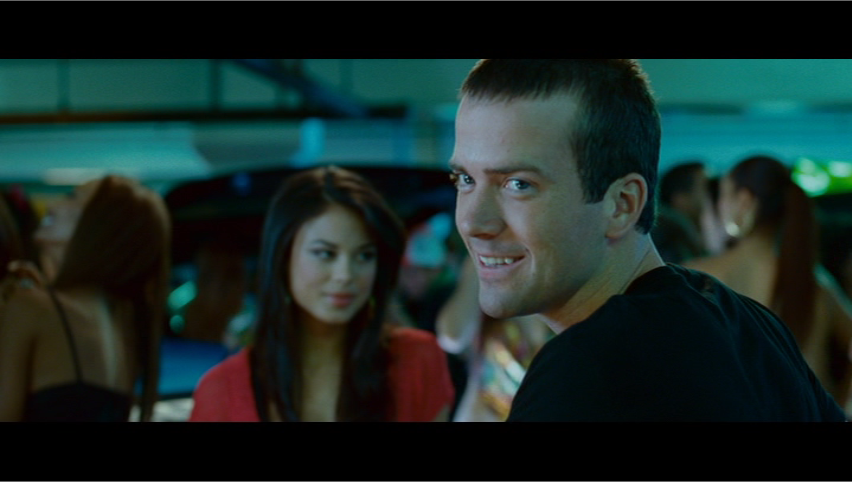
Besides that, his character is barely an active participant in his own story. Things just kind of happen to him by accident and he artlessly rolls with the punches. Neela basically falls in love at first sight, Han gives him cars like they’re sticks of chewing gum, and Twinkie incorporates him into his bootleg electronics enterprise almost immediately. Even when Sean screws up by getting incompetently involved in Twinkie’s iPod deal gone bad, they’re still all chummy in the next scene.
Highlight?
Sung Kang’s standout performance as Han makes up the entire emotional core of the film. He’s as charismatic as Vin Diesel’s Dominic Toretto was supposed to have been in the first film and at least as cool. Kang embodies a pure, zen-like resolve as the low-level gangster who cares more about fun and friends than money.
During the first race with D.K. that has Sean ineptly drifting Han’s car into anything and everything, Kang’s body language is intensely casual. The apathy he exudes is inherently badass as he watches his car slowly get destroyed. He’s happy to observe most of the goings-on from the sidelines and give sage wisdom in a calm, collected voice. His eventual death is a big shock, so it’s refreshing when it’s revealed that the later films are technically prequels to Drift when Han was still alive and part of Toretto’s crew.
Apparently this character is an extension of one that the magnetic Kang played in Justin Lin’s earlier film, Better Luck Tomorrow. I have yet to catch up with that one, but after seeing this performance it’s not the least bit surprising that Lin would want to roll him into the Fast and Furious mythos.
Lowpoint?
Pretty much anytime someone said the word “drift” I felt my eyes glazing over. Whenever a movie has to really explain something to an audience (especially if it’s indicative of a real world “trend”), directors/screenwriters feel the need to painfully spell it out. Whether it’s the similarly named act of drafting in Days of Thunder, Texas Hold ‘Em in Rounders (and inexplicably, again in Casino Royale), or even arm-wrestling in Over the Top, it’s typically an artless information dump that treats the audience like idiots. This is especially true since I’d bet good money that most of the viewers of Tokyo Drift have used the power slide in Mario Kart games before.
When Sean first attempts drifting and keeps screwing up Han’s car, that’s all we need to see. Then Han can say “Let me teach you how to drift the car around corners”; cue the montage. Instead Bow Wow explains the concept before that, then Sean fails at it, then people continually remark on how he’s not good at drifting, then he hounds Han to teach him how to drift, then Han teaches him to drift, and then they just keep talking about drifting. Film is a visual medium, we don’t need all this.
For some reason, Justin Lin and screenwriter Chris Morgan throw the concept in there more than those little blue guys say the word “smurf”. At one point, Sean IMs Neela (whose screen name, according to IMDb trivia is Japanese for “Drift_Girl”) why she never goes “drifting” with him. This isn’t a metaphor. The following sequence is a ballet of dozens of cars lazily drifting back and forth on a lonely mountain road. There’s a scene where two older fisherman (one being real life “drift king” Keiichi Tsuchiya) are watching the “learning to drift montage” shaking their heads all like, “You call that drifting?” as if it’s as Japanese as sushi and sadistic game shows. During the chase where Han is killed, all four cars involved are on a major highway drifting through traffic, but there weren’t even any curves in the road. This is a life or death situation– I promise you that you’ll go much faster if you just drive in a straight line! To reiterate, the only name given for the main bad guy is “Drift King”. The tagline of this movie should have been “Do you even drift, bro?!”
Was It Worth Watching?
Despite what the revisionist franchise fans might say, The Fast and the Furious: Tokyo Drift is the nadir of the series. I do agree that it’s the turning point of the franchise and it’s great to see Justin Lin creating a grand plan for the overall tone, however the lack of narrative thrust really hurts it. The beats of the story are actually very similar to the first in the series. An outsider becomes enraptured by the mesmerizing leader of a gang with criminal ties despite the warnings of an authority figure. Along the way his choice of crush causes a lot of friction in the group, while he slowly gets pulled further into a life of crime. Also, people race a lot of neon-colored cars.
In both movies, the final conflict with the “villain” seems almost an afterthought. D.K. is ever present throughout Tokyo Drift due to Sean’s relationship with Neela, but the stakes aren’t made clear until the top of the third act. D.K. doesn’t graduate from a douchey, jealous boyfriend to a bonafide antagonist until it’s revealed that Han has been stealing from the crime syndicate. In the first film, O’Conner and Toretto had the cop/criminal tension keeping the movie at least somewhat engaging from square one. Before the last 20 minutes or so, Tokyo Drift is merely a slight movie about a white kid in Japan who likes cars a lot.
Action A Go Go on Twitter and Instagram | Follow Zak Attack on Twitter and Letterboxd | Be sure to leave your thoughts in the comments section!
All images courtesy of Universal Pictures




